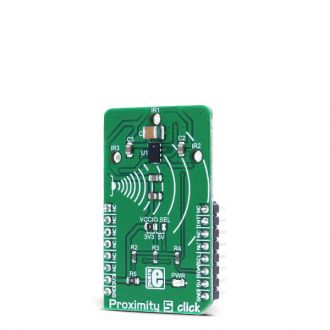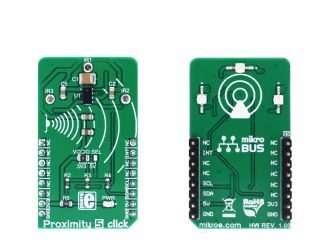
We strongly encourage users to use Package manager for sharing their code on Libstock website, because it boosts your efficiency and leaves the end user with no room for error. [more info]

Rating:
Author: MIKROE
Last Updated: 2018-04-10
Package Version: 1.0.0.0
mikroSDK Library: 1.0.0.0
Category: Proximity
Downloaded: 5879 times
Not followed.
License: MIT license
Proximity 5 click is a very accurate and reliable proximity sensing (PS) and ambient light sensing (ALS) device, equipped with the state-of-the-art PS and ALS sensor.
Do you want to subscribe in order to receive notifications regarding "Proximity 5 click" changes.
Do you want to unsubscribe in order to stop receiving notifications regarding "Proximity 5 click" changes.
Do you want to report abuse regarding "Proximity 5 click".


Library Description
This library provides generic functions for working with the Click board.
Key functions:
Examples Description
The application is composed of three sections:
void applicationTask()
{
char text[10];
proximity5_getValues(&bff);
mikrobus_logWrite("PS1 ",_LOG_TEXT);
WordToStr(bff[0],text);
mikrobus_logWrite(text,_LOG_LINE);
mikrobus_logWrite("PS2 ",_LOG_TEXT);
WordToStr(bff[1],text);
mikrobus_logWrite(text,_LOG_LINE);
mikrobus_logWrite("PS3 ",_LOG_TEXT);
WordToStr(bff[2],text);
mikrobus_logWrite(text,_LOG_LINE);
Delay_ms(500);
}
Other mikroE Libraries used in the example:
Additional notes and information
Depending on the development board you are using, you may need USB UART click, USB UART 2 click or RS232 click to connect to your PC, for development systems with no UART to USB interface available on the board. The terminal available in all MikroElektronika compilers, or any other terminal application of your choice, can be used to read the message.